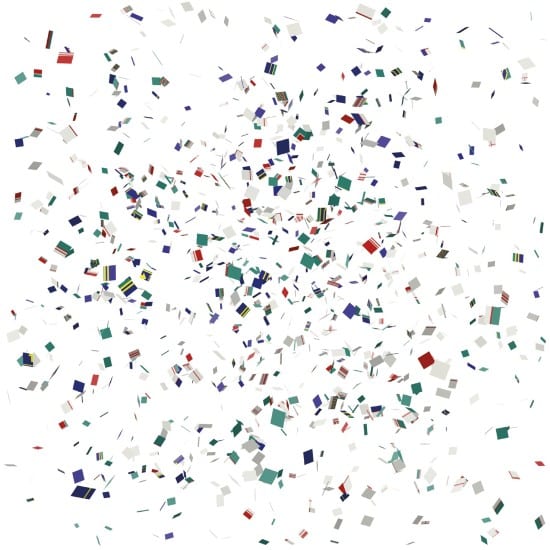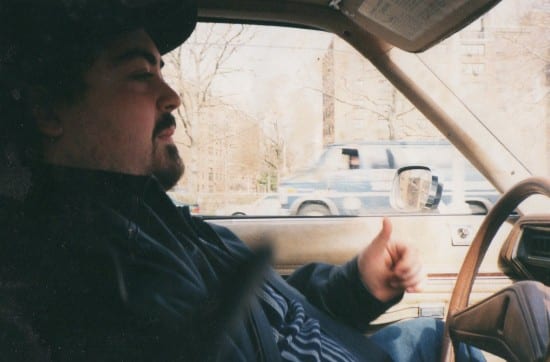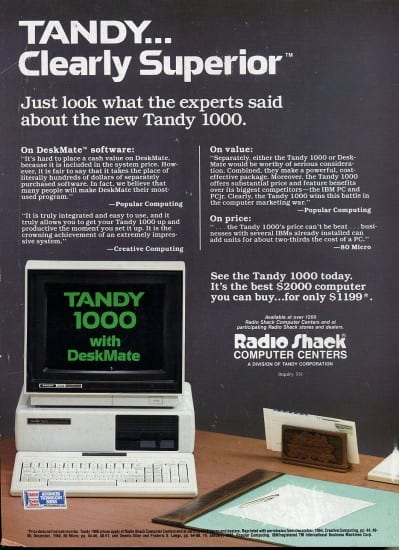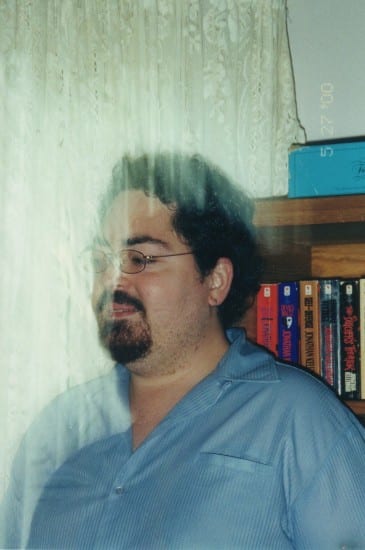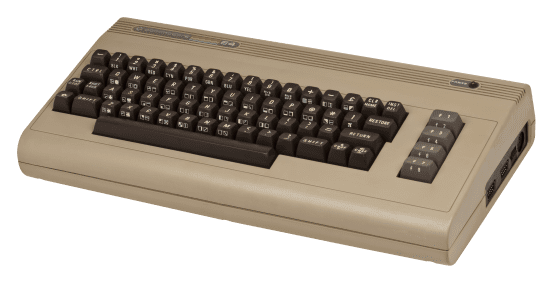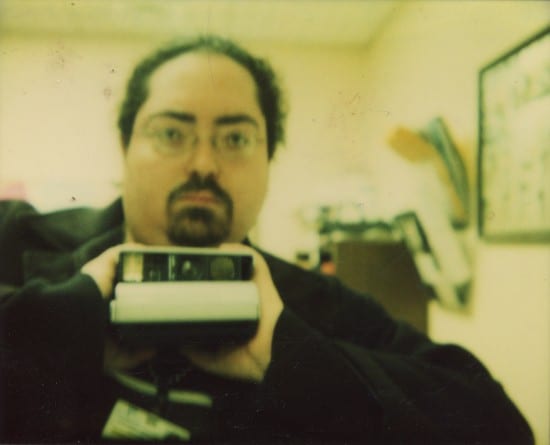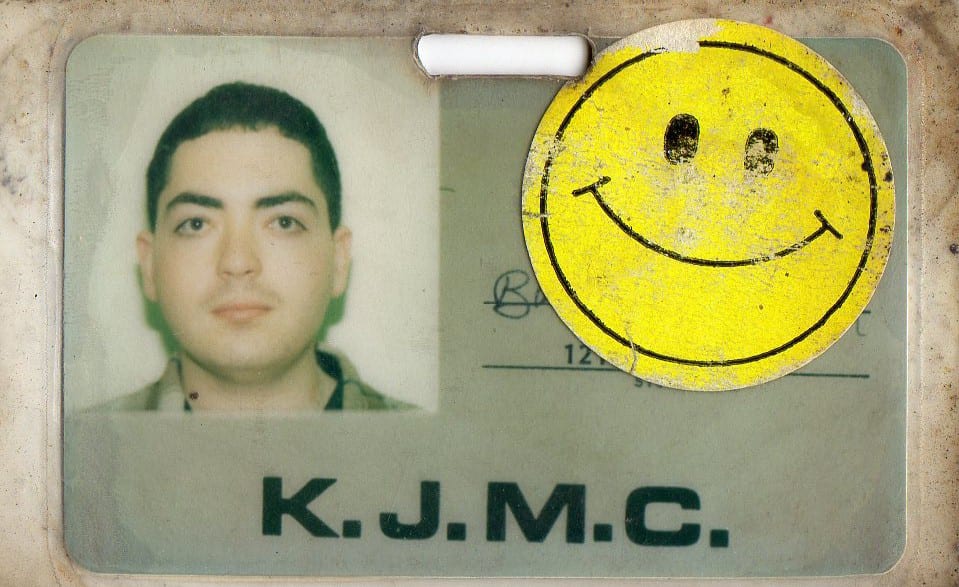
Have you ever tried to write music on an iPad? Wrangling with fat fingers, swiping between apps and cursing the crashy “make do” world of Audiobus integration? Ramez Silyan’s mini-documentary ‘The Opposite‘, a deconstruction of Ben Zimmerman’s productions called ‘The Baltika Years‘, will make any of that seem like a case of #firstworldproblems.
Composed between 1992 and 2002, Ben’s canon of works were mainly created on a Tandy Deskmate, a software application that provided an operating environment that competed with early versions of Microsoft Windows. Just to put that into context – floppy disc’s, no desktop, no input devices bar a standard keyboard and basic functions such as navigating directories and launching programs were a case of technical knowledge rather than left mouse intuition.
In a world where music production is gradually homogenised through the cloud based availability of music and re-imaginings of one time scarce and prohibitively priced classic analogue gear, finding and creating something utterly unique is a genuine challenge. Sonically, The Baltika Years sits somewhere between Koji Kondo’s legendary SNES compositions and the frequently offkilter anti-hiphop Odd Nosdam, exuding a character than can only come with the limitations of ancient sound chips and minuscule memory footprints.
We took the opportunity to speak to film producer Ramez Silyan about how the project came about, plus an in-depth discussion with Ben Zimmerman about the production of the pieces.
BEN ZIMMERMAN – THE OPPOSITE
A Film by Ramez Silyan
INTERVIEW: RAMEZ SILYAN
How did you stumble across this project, what drew you to it?
I had worked with Software in the past on more traditional music videos and they reached out about doing a mini-doc artist profile on one of their new artists, Ben Zimmerman. I responded like I do with any other proposal from people I enjoy working with; I immediately dug into the material and pressed play. I was instantly captivated and interested in getting involved. Then I read the bio and I knew I had to do this.
Was tracking down the archive Tandy footage a challenge?
I don’t want to say it was as difficult as it would have been six years ago, but it was still a painful process just trying to get decent footage of the right model. I looked into actually buying one and shooting it myself, but it proved too difficult and I stuck with whatever I could find. Not that I mind watching incredibly cheesy vintage commercials selling a desk computer that can do less than my cell phone.
Do you have any plans to track down other producers whose productions come from the most niche hardware setups?
I wouldn’t say this was ever planned. I think some of the most interesting opportunities come to you and I always have my door open to anything that might come my way. As far as niche hardware, I’m definitely interested in working with anyone that has something truly unique to offer.
INTERVIEW: BEN ZIMMERMAN
You’ve been sitting on this project / music for a long time – How do you feel about finally releasing it into the world? Do you feel that the time is right?
My technical skills are now up-to-par. I’m better prepared for performing this project than I was when these pieces were written. I spoke Tandy’s language, i.e. musical notation and was more focused on scores themselves when I was younger. I sang in both High School and College choirs for a total of four consecutive years starting in the eleventh grade which required me to sight-read. I can remember myself as a kid checking out Varese and Steve Reich scores and read them while listening to the music.
The Tandy had zero DSP (digital signal processing). Not a chorus or compressor in sight. Back then, all I could do was hit the spacebar to start a song, but the thought never occurred to me that this music was performable. Recently, I was able to fully archive (543 files) all the surviving song files.
I’m still in shock that the Tandy material is out. I’ve been sitting on some of these recordings for half-a-lifetime, existing on cassette tapes that were lying in my closet. In fact, an old friend of mine gave me his copy of missing Deskmate music in 2007 that wound up on the album. As a finished product, the sound quality (i.e. transferring, mastering and pressing) and artwork are top notch. For me to hold a copy, or listen to the album on Spotify is like a gift.
Did you feel that you were making pretty futuristic music back then or just an arbitrary experiment? – Were there any moments when you felt like launching the Tandy out the window? Or soul crushing moments when archaic technology irreparably failed you.
The Tandy had extremely limited capabilities. I originally used it to print out homework assignments for music theory class at Brooklyn College circa 1992. The floppy discs were also in bad shape, so I ripped them around 2002 when the computer died.
For the first year or two, I experimented with American Minimalism via copying and pasting musical lines and only using stock sounds: cello, piano and flute. I tried to utilize the Tandy to create scores, but the three-note limit rendered it useless in that department.
In 2008, after years of using Sony Acid and Sound Forge (Audio Mulch, Reason, et al), I finally mastered Ableton and learned how to create my own tools in ChucK (and Processing for video).
Being saddled with the Tandy computer for so many years got me interested in creating my own effects. As a young boy, I took apart all my electronic toys, so the jump to musical electronics was natural. In the middle-period of using the Tandy, I realized that I needed something more, so I began making music on a PC with a friend in 1997.
I loved Granulab, ReBirth and even Sound Forge. I also began collecting records and synthesizers in the 90s. I’m not nostalgic about the Tandy or retro computers, but I got a Yamaha QY70 in the last 6 years, which opened the door to some other gear.
I even bought a few old sequencers, but don’t use them. I like the sound of vintage synths, 12 bit samplers and would have loved a FairLight at the time I made the Tandy pieces. I also like the Commodore 64 SID sound and LoFi sounds. I was exposed to 8 bit as a kid, 16 bit as a teen, and so on.
Listening to the album, one track really stood out to me – Tell me about “Life Without Liz” – Who is Liz, and how do you go about selecting track titles?
A lot of my titles are not random. While some titles are random, others have some meaning. Liz was my first girlfriend back in high school and on and off in the early 90’s; sadly, she passed away in 2006.
My late-uncle convinced both of us to buy Tandy computers when we were in high school. For instance, “For Mimi” is named for a co-worker (Mimi Ling) of my Mom who passed away. “Phyllis” is the name of my mother. I have varied rules for creating song titles. Oftentimes, I’ll name something that I’ve just randomly overheard.
Do you have a favourite track from the album?
“Pausebreak 1” is my favorite. However, the best piece I created on the Tandy was one that I never had a chance to archive, because after my computer bit the dust in 2002. Nothing was retrievable and I eventually got rid of it. The only thing I remembered about that piece was that I sampled from the soundtrack to a horrific 80s film called “The Emerald Forest“. I believe my uncle got a chance to hear it.
Tell us about the artwork for the album? What’s the story behind this fragmented composition?
I didn’t create the artwork, but the person who did, Bobby Houlihan, used screenshots from Deskmate (I think 3.1) and “exploded” the images. The artwork itself has inspired me to sketch something in Processing that would fracture images in real-time.
The Baltika Years has already been condensed down into double LP format, released early in June 2015, with the documentary finally just becoming available to stream via Youtube. Order a vinyl copy of the album from Boomkat.
Ben ZimmermanSoftware Recording Company7 June 2015ElectronicExperimental
